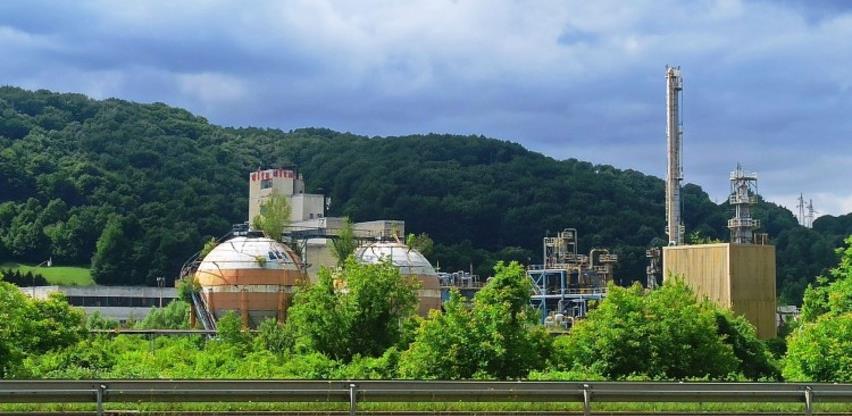The Ministry of Physical Planning and Environmental Protection of Tuzla Canton is seeking help from higher levels of government, as well as from the European organizations for the removal of toxic waste from the industrial zone of the HAK factory.
The process is very expensive and this canton will hardly be able to solve it on its own.
According to the report on the quantities of hazardous waste of crocus in the industrial zone HAK II in Tuzla, kruks is at a depth of half to three meters. Chemical analysis revealed increased amounts of chlorine, which is carcinogenic, corrosive and toxic, and the presence of heavy metals chromium, lead and nickel.
Samples of the first substances found were sent for analysis to the Zagreb laboratory “Eurofins”, and according to the number under which the kruks was registered, it is waste that was generated from organic and chemical processes or the rest of the reactions and distillations.
Through a public call of the Environmental Protection Fund of FBiH, the relevant cantonal ministry will apply for funds for the preparation of environmental impact studies and remediation of soil contaminated with hazardous waste and its removal.
“The FBiH Environmental Protection Fund will make every effort to resolve this key issue for Tuzla in a systematic and most efficient way,” said Fuad Čibukčić, the Fund’s director.
After the initial excavation and neutralization of kruks in 2010, it was determined that the disposal of kruks is about one dunum in size and that it contains 1,350-1,750 tons of kruks, which was improperly buried in the industrial zone of Tuzla.
The total volume is from 1,200 to 1,500 cubic meters. After laboratory analyzes, the volumetric mass of the kruks was determined, which differs depending on the way of disposal.
“Preparation of an impact study on the environment is the following step, and it will be financed from the funds for which we applied to the Environmental Protection Fund. We are asking for funds from higher levels of government and we are lobbying foreign organizations to help us with that,” said Zvjezdan Karadžin, Minister of Physical Planning and Environmental Protection of Tuzla Canton.
Ways of disposal will be determined through the environmental impact study. Kruks can be neutralized on the spot according is specific procedures are followed and implemented under strict control.
“The best option, but also the most expensive, is to export it and burn it in an incinerator in Western Europe. It is expensive because one kilogram of exporting and burning of that material costs 2.5 BAM. If we multiply that with the tons we have here, it is over four million BAM“, explains the Minister and adds that the least dangerous option will be used for both the environment and the population, and all that will be defined by experts in the study.
Kruks and other chemical compounds that were found pose a danger to the health of the population, especially due to the fact that they are buried in the ground, right next to the river Jala, and they are also found in barrels that the water has caused to decompose.
Goran Stojak from the Bukinje Local Community Council says that he sent letters to all competent institutions several times and warned of toxic substances deposited in the land, which only further complicated the problem of Bukinje pollution, which also has the Tuzla Thermal Power Plant and ash and slag dumps.
“We are glad that there is an initiative for resolving the issue, if it really starts. I hope it will not end as before when we had only studies after studies. We have received the answer that it was a private company. It is currently unclear whether this is private or cantonal. Studies are paid for by us, all citizens, and the property is private. I think that nothing will be resolved until the responsible persons are sanctioned and an example is set so that others do not do the same,” Stojak believes.
He reminds that the landfill of toxic waste is located across the houses, which are now empty, because the residents became ill, some died, some moved out.
Damir Arsenijević, representative of the Platform for Ecological Humanities “Earth – Water – Air” also believes that the damage has already been done, and says that toxic substances deposited in the ground have already poisoned the area.
“All these poisons that are present in the facilities of the former HAK factory affect citizens on much larger scales. They have been working for hundreds of years and have poisoned the land for hundreds of years. We need to think in these time frames in terms of both land use and living, not only here nearby, but also in much wider geographical ranges. Mercury finds its way. Metals are dispersed through soil and groundwater. That is the geography of poisons, which is much bigger than what we see on the surface,” said Arsenijević, adding that it is commendable that the relevant ministry has initiated solving the problem.
However, a lot of money is needed, and he agrees that help is needed, not only from higher levels of government, but also outside BiH.





